Differences Between PPF and Ceramic Coating
Differences Between PPF (Paint Protection Film) and Ceramic Coating
Two popular solutions to preserve your paint are Paint Protection Film (PPF) and ceramic coating.
Car owners and automotive enthusiasts alike know how important it is to protect a vehicle’s paint from environmental damage. Between rock chips, scratches, dirt, and UV rays, your car is constantly exposed to hazards that can affect its appearance and long-term value. While Paint Protection Film (PPF) and ceramic coating aim to protect your vehicle’s finish, they differ significantly in terms of composition, application, cost, and benefits. Here’s a guide to help you decide which option best suits your needs.
What is PPF (Paint Protection Film)?
PPF is a thermoplastic polyurethane film that’s applied directly to your car’s painted surfaces. It’s clear, virtually invisible, and can be installed across the entire vehicle or on high-impact areas such as the hood, mirrors, and bumpers.
Advantages of PPF:
– Physical protection: PPF acts as a physical barrier against road debris, rock chips, and even light scratches.
– Self-healing properties: Some types of film can self-heal under heat, removing minor scratches on their own.
– Chemical resistance: It also protects against contaminants like bug splatter, bird droppings, and harsh chemicals.
– Durability: With proper maintenance, PPF can last up to 10 years.
Disadvantages of PPF:
– Cost: PPF installation can be expensive, especially if you’re covering the entire vehicle.
– Appearance: If not installed properly, the film may show bubbles, edges, or visible seams that affect the look.
What is Ceramic Coating?
One of the standout features of ceramic coatings like Ceramic Pro is their **hydrophobic nature**—they repel water. Water, dirt, and grime bead up and slide right off the surface. This not only makes your car easier to clean but also keeps it looking cleaner for longer between washes.
Advantages of Ceramic Coating:
– Hydrophobic effect: Repels water, dirt, and contaminants, making the car easier to clean.
– Enhanced gloss: Deepens the shine and brings out the colour in your paint, giving your car a showroom finish.
– UV protection: Prevents oxidation and fading caused by prolonged sun exposure.
– Lifespan: Depending on the product and how well it’s maintained, ceramic coatings can last between 2 to 5 years.
Disadvantages of Ceramic Coating:
– No impact resistance: Unlike PPF, ceramic coatings don’t protect against rock chips or scratches.
– Requires professional application: While DIY kits exist, professional application is recommended for best results.
Which Option Should You Choose?
The choice between PPF and ceramic coating depends largely on your priorities and budget.
Choose PPF if: You want maximum protection against physical damage such as scratches, rock chips, and abrasions. PPF is especially ideal for high-impact zones like the front bumper and hood.
Choose ceramic coating if: You’re more focused on achieving a flawless finish and protecting your vehicle against environmental contaminants and UV damage. It’s perfect for car owners who want a glossy, easy-to-clean finish that lasts.
For ultimate protection, many vehicle owners opt to combine both solutions: applying PPF on the most vulnerable areas and ceramic coating on the rest of the vehicle.
Conclusion
At the end of the day, your choice should reflect your driving habits, personal preferences, and budget. With the right protection in place, your car can maintain its shine and value for years to come. Whether you go with PPF, ceramic coating, or both, investing in one of these options is a smart move for any car enthusiast who wants to keep their ride looking its best.
Contact-us
By appointment only
Please contact us in advance
Telephone
514.571.0280
Email
poliperfect99@gmail.com
Operating hours
Mon-Sat 8:am-6:pm


